Plane Geometry
1/88
There's no tags or description
Looks like no tags are added yet.
Name | Mastery | Learn | Test | Matching | Spaced |
|---|
No study sessions yet.
89 Terms
Geometry
It was derived from the Greek words “ge” meaning earth and “metria” meaning measurement
Plane Geometry
it deals with the properties of plane figures or geometrical shapes of two dimensions, such as angles, triangle, square, polygons, conic sections, etc.
Solid Geometry
Deals with the properties of geometrical shapes of three dimensions, such as cones, pyramids, cylinders, prisms, spheres, etc.
Euclidean Geometry
a geometry that is based on the assumptions of Euclid.
Non-Euclidean Geometry
a geometry that is not based on the assumption of Euclid
Projective Geometry
deals with the study of those properties of plane figures that are unchanged when a given set of points is projected onto a second plane
Trigonometry
a geometry which specializes on the study of triangle
Analytical Geometry
a geometry which deals with geometric problems by using the coordinates system and transforming them into algebraic problems
Differential Geometry
a geometry that applies differential and integral calculus to curves, surfaces and other geometric entities
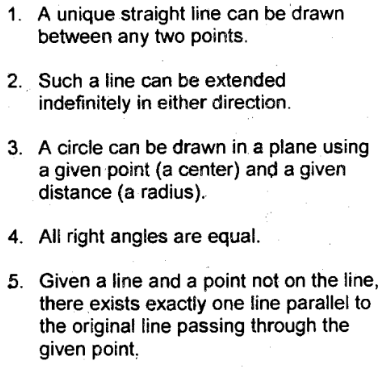
Basic Postulates of Euclid (Parallel Postulate)
Point
a dimensionless geometric figure having no properties other than location or place
Line
the shortest distance between any two points.
Angle
the opening between two lines or two planes that meet

Null or Zero Angle
angle equal to 0
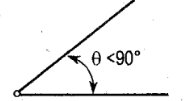
Acute Angle
angle greater than 0 but less than 90deg or pi/2 rad
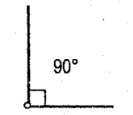
Right Angle
angle equal to 90 deg or pi/2 rad
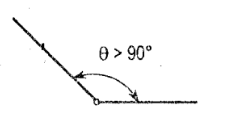
Obtuse Angle
angle greater than 90deg or pi/2 rad but less than 180deg or pi rad

Straight Angle
angle equal to 180deg or pi rad
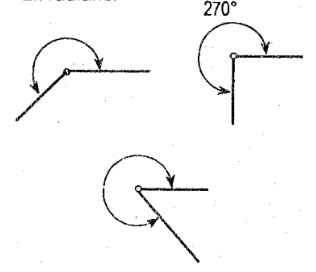
Reflex Angle
angle greater than 180deg or pi rad but less than 360deg or 2pi rad

Full angle or Perigon
angle equal to 360deg or 2pi rad

Adjacent Angles
two angles with a common leg
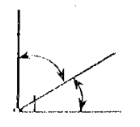
Complementary Angles
two angles whose sum is a right triangle (90deg)

Supplementary Angles
two angles whose sum is a straight angle (180deg)
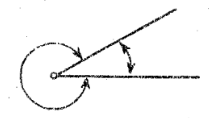
Explementary Angles
two angles whose sum is a perigon (360deg)
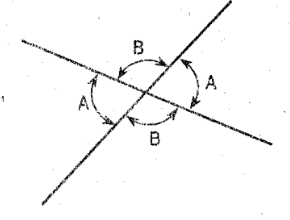
Vertical Angles
angles formed by two intersecting lines.
Bisector
it is a straight line which divides a geometric figure into two equal figures
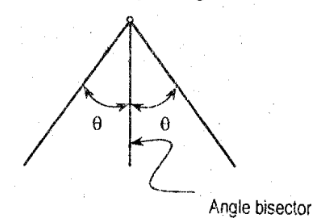
Angle Bisector
it is a line which divides an angle into two equal angles
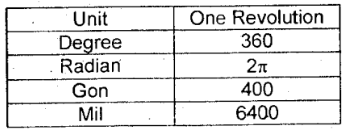
Different Unit of Angles
Regular Polygon
it is a polygon having all sides equal and all angles equal
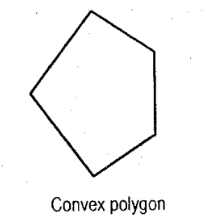
Convex Polygon
it is a polygon having interior angle less than 180deg
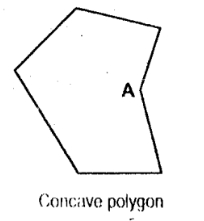
Concave Polygon
it is a polygon having an interior angle greater than 180deg
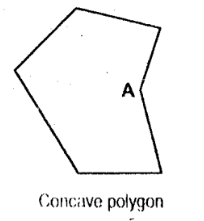
Reentrant Angle
it is the inward-pointing angle (A) of the concave polygon

Salient Angle
it is the outward-pointing angle of the concave polygon
Diagonal
it is the line in a polygon connecting two opposite vertices
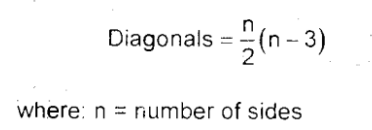
Number of Diagonals = (n/2) (n-3)
Where:
n = number of sides
formula derivation:
Square: 4 Sides; 2 Diagonals
Number of Diagonals Formula:
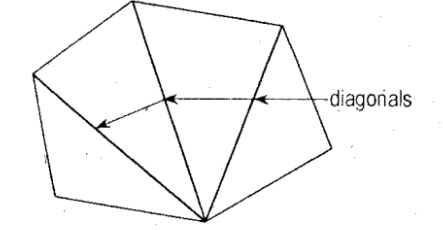

Sum of Interior Angles = (n-2) 180deg
Where:
n = number of sides
formula derivation:
Triangle: 3 Sides; Sum of interior angles 180deg
Sum of Interior Angles Formula:
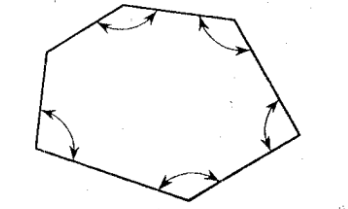

Deflection Angle
it is the angle subtended on a polygon by the prolongation of the side to the next side

360deg
Sum of Deflection Angles:

Triangle
it is a polygon with three sides
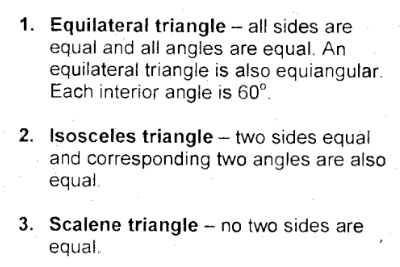
Classifications of Triangle according to their Sides:
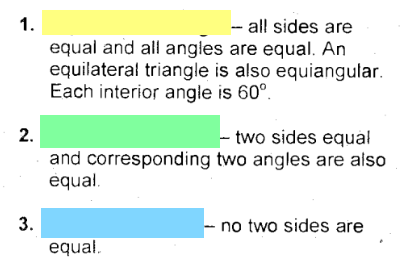
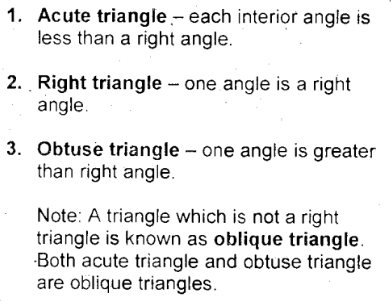
Classifications of Triangles according to their Angles:
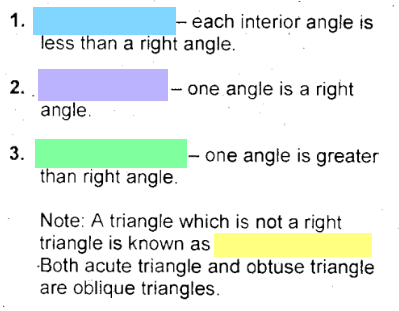
Quadrilateral (quadrangle or tetragon)
It is a polygon with four sides
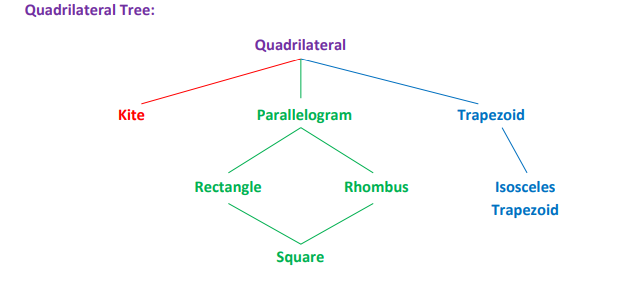
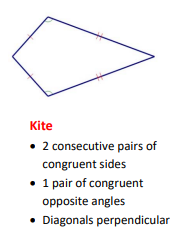
Kite
A quadrilateral with two consecutive pairs of congruent sides, but with opposite sides not congruent.
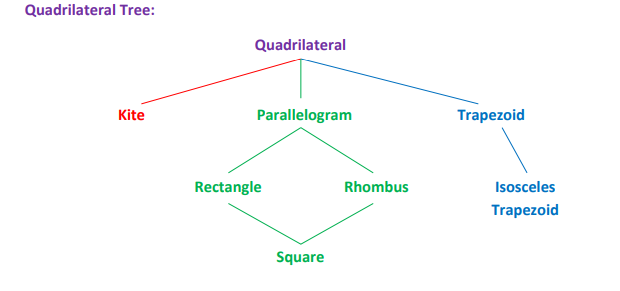
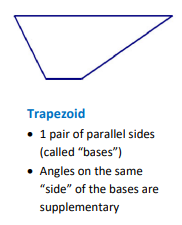
Trapezoid
A quadrilateral with exactly one pair of parallel sides.
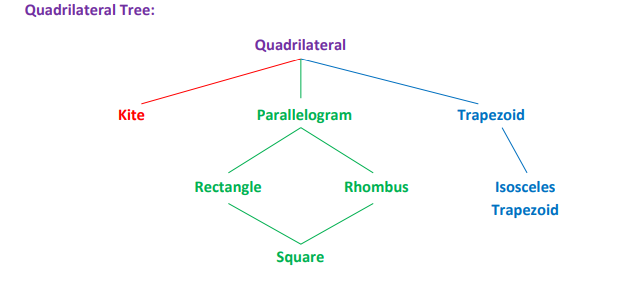
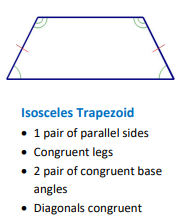
Isosceles Trapezoid
A trapezoid with congruent legs.
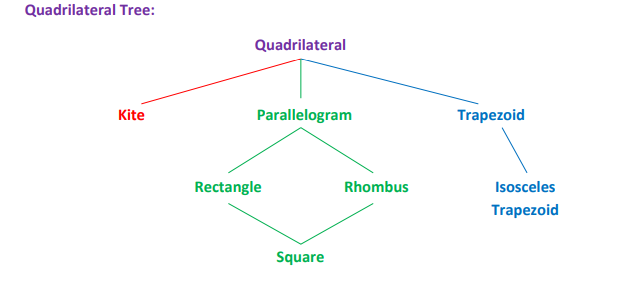

Parallelogram
A quadrilateral with both pairs of opposite sides parallel.

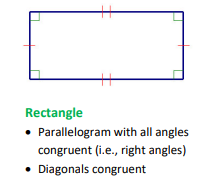
Rectangle
A parallelogram with all angles congruent (i.e., right angles).
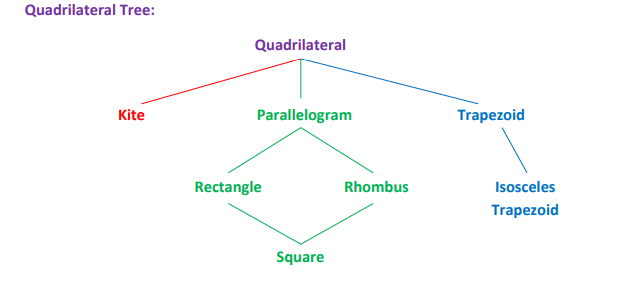
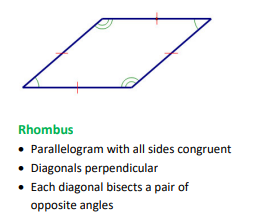
Rhombus
A parallelogram with all sides congruent.
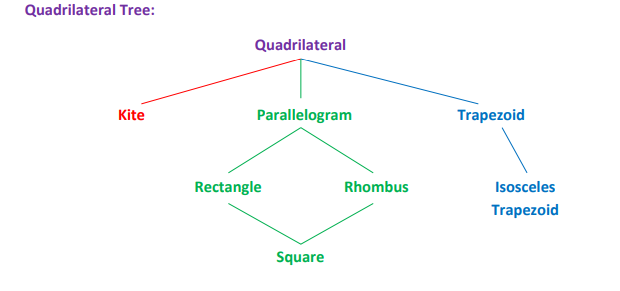
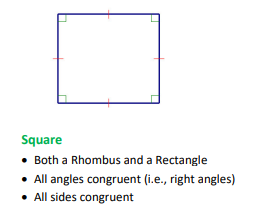
Square
A quadrilateral with all sides congruent and all angles congruent.
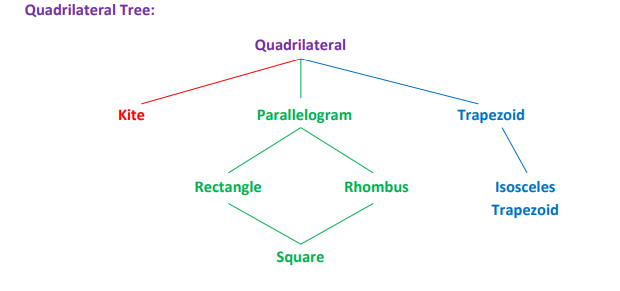

Perimeter and Area of a Kite

Perimeter and Area of a Trapezoid

A = ½ (d1)(d2) sin(theta) = bc sin(theta)
Perimeter and Area of a Parallelogram

Perimeter and Area of a Rectangle

A = s² sin (theta)
Perimeter and Area of a Rhombus

Perimeter and Area of a Square
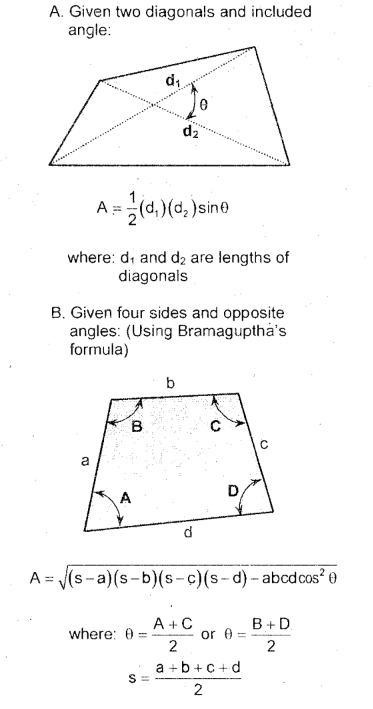
Heron’s Formula & Bramaguptha’s Formula alike
theta = median of opposite angles
semi-perimeter = sum of sides/2
Area of a Trapezium (General Quadrilateral)
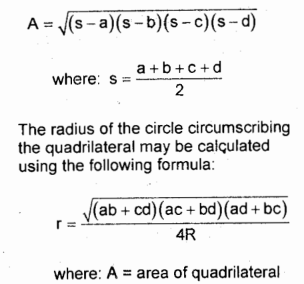
Area of Cyclic Quadrilateral
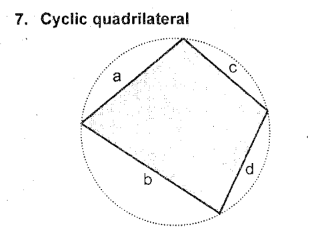

Area of Quadrilateral Circumscribing a Circle
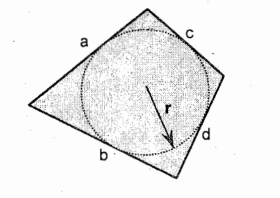
Bramaguptha’s Theorem
"In a cyclic quadrilateral having perpendicular diagonals, the perpendicular to a side from the point of intersection of the diagonals always bisects the opposite side"
Ptolemy’s Theorem
"The sum of the products of two pairs of opposite sides of a convex cyclic quadrilateral is equal to the product of the lengths of the diagonals."
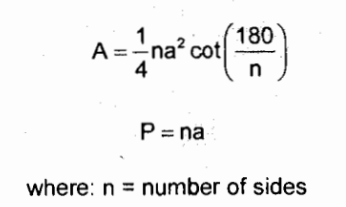
A = (na²)/(4 tan(180/n))
P = na
Perimeter and Area of a Regular Polygon
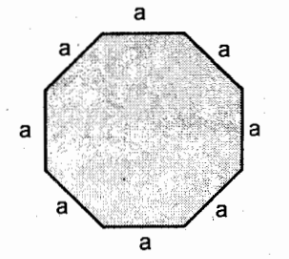
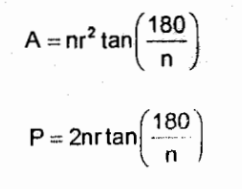
A = nr² tan (180/n)
*looks alike with Area of circle with pi as n and multiplied with tan(180/n)
P = 2nr tan (180/n)
*looks alike with Perimeter of circle with pi as n and multiplied with tan(180/n)
Perimeter and Area of a Regular Polygon Circumscribing a Circle

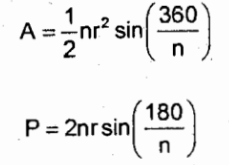
A = ½ nr² sin(360/n)
*looks alike with Area of circle with pi as n and multiplied with ½ sin(360/n)
P = 2nr sin(180/n)
*looks alike with Perimeter of circle with pi as n and multiplied with tan(180/n)
Perimeter and Area of a Regular Polygon Inscribed in a Circle
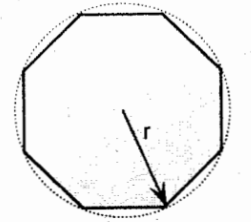
Perimeter
it is a distance around a two-dimensional shape
Circle
it is a plane curve that is the locus of all points in the plane equidistant from a given point, called center.
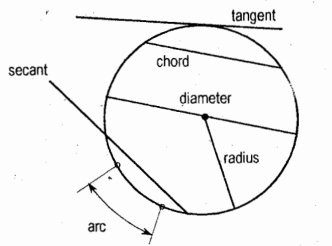
Arc of a Circle
it is the length of circle between two points on the circle or between two radii

Tangent of a Circle
it is a line touching the circle in one place
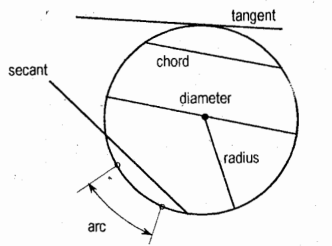
Secant of a Circle
it is a line cutting the circle in two places
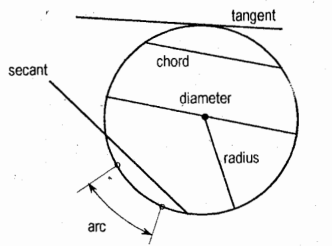
Diameter of a Circle
It is the longest chord of a circle that passes through the center
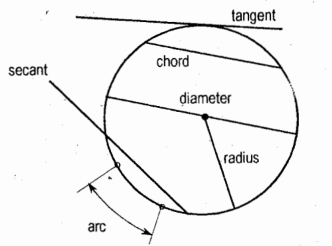
Radius
it is the distance from the center to the circle
it is ½ of the diameter
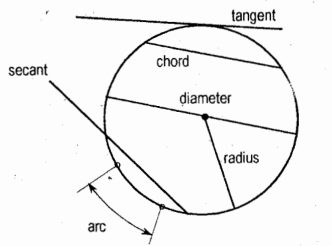
Chord
it is the segment of a secant bounded by the circle
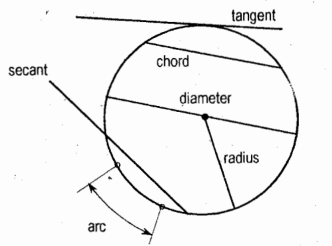
Circumference (Periphery)
it is the perimeter of a circle
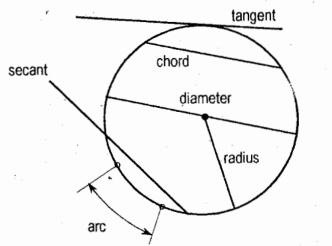
Radian
it is the measure of an angle whose arc length is equal to the radius of a circle

Sector of a Circle
it is the area bounded by two radii and the included arc
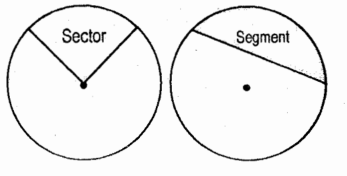
Segment of a Circle
it is the area bounded by a chord and the arc subtending the chord
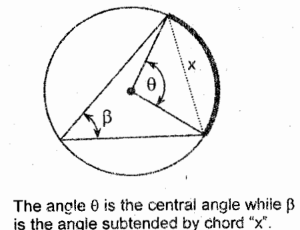
Central Angle
it is an angle whose vertex is at the center of a circle and whose sides are the radii
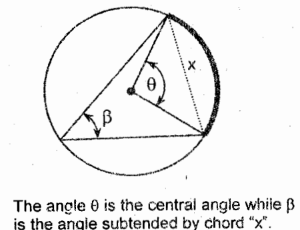
Angle subtended by a Chord
it is an angle whose vertex is along the periphery or circumference and its sides are chords
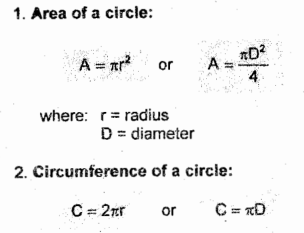
Area and Circumference of a Circle
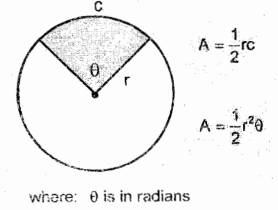
Area of Sector of a Circle
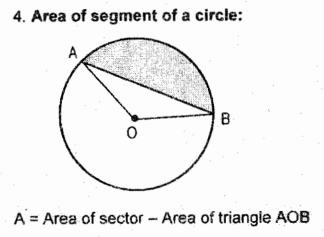
Area of Segment of a Circle
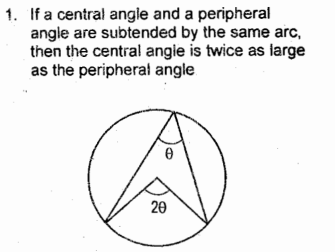
Relation of Central Angle and Peripheral Angle

Inscribed Angles subtended the same Arc
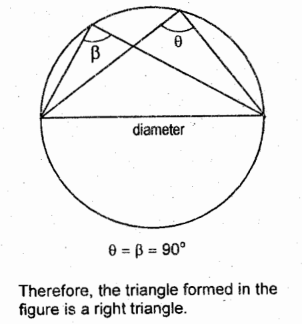
Inscribed Angles subtended by the Diameter
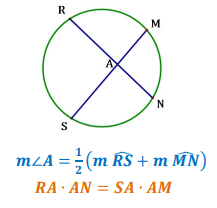
Vertex Inside the Circle
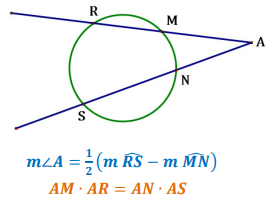
Vertex Outside the Circle
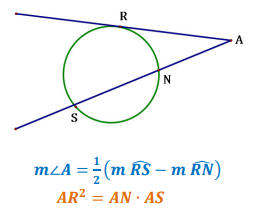
Tangent on One Side
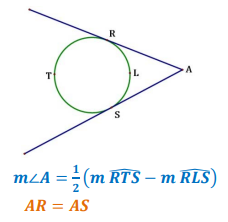
Tangent on Two Sides

Ellipse
it is a locus of a point which moves so that the sum of its distances to the fixed points is constant and is equal to the length of the major axis
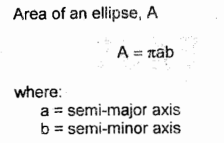
A = (pi)(a)(b)
*looks alike with the Area of a Circle but replacing r² with ab
Area of an Ellipse